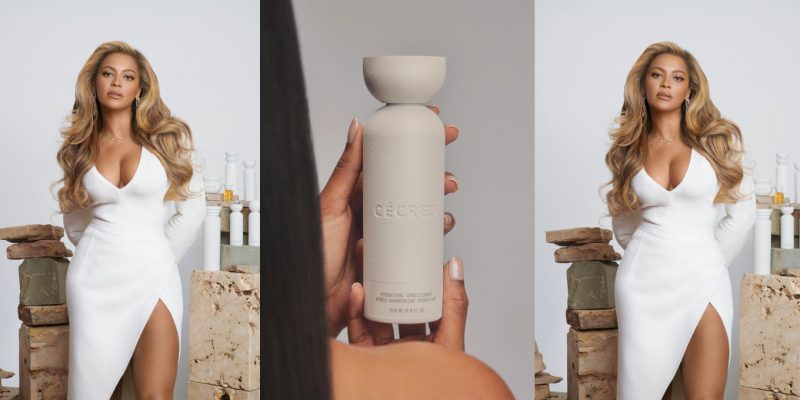Beauty
Cosmetics of the future
The marriage of cosmetics and pharmaceutical ingredients promises eveything from wrinkle-free foreheads to fading age spots. Can you believe the hype? Vanessa Craft investigates cosmeceuticals
by : Vanessa Craft- Dec 28th, 2010

Shopping for a new face cream these days is no mean feat — if you’re not accosted by a baby-faced sales clerk selling the latest wrinkle-wrestling snake oil, you’re still confronted by a myriad of scientific claims and ingredients with names you can barely pronounce (kojic acid? tretinoin? Huh?).
The latest beauty counter buzzword? Cosmeceuticals: products that tread the line between cosmetics and pharmaceuticals. The days of buying a moisturizer that does only that are definitely over — but how effective are these new-generation products that promise a multitude of anti-aging benefits?
"Cosmeceuticals contain ingredients that affect the biological function of the skin," says Martie Gidon, a cosmetic dermatologist in Toronto. "They cleanse or moisturize like a regular over-the-counter product, but they also have the ability to improve the skin’s health and appearance — they can lessen dryness or roughness of the skin, liven up dull complexions, smooth fine lines and lighten brown spots or other areas of sun damage."
An unregulated industry
What’s surprising — and worrying — is that cosmeceuticals are unregulated by the government (although it does monitor product claims to ensure they’re not exaggerated). The cosmeceuticals industry is not subject to any form of review — nor does Health Canada officially recognize it. This means testing a product to see if it lives up to its claims is not a mandatory requirement for manufacturers, leaving the onus on the buyer to really do her beauty homework before she hits the stores.
If you buy into the hype that some companies will have you believe, taking a decade off your face with the swoop of a facial scrub is effortlessly possible. (Stating the obvious — it’s not.)
"Realistic expectations for using a cosmeceutical product are a reduction of fine lines and an improvement in the texture of your skin," says Jaggi Rao, an associate clinical professor of dermatology at the University of Alberta in Edmonton. "But this will take time — weeks, maybe months — before you’ll get results."

Frances Jang, a Vancouver-based cosmetic dermatologist, says cosmeceuticals can’t offer the same level of results you’d see after more involved procedures (such as microdermabrasion or Intense Pulsed Light, but they are good for improving the general tone and colour of the skin. "They can help to refine your skin’s surface," she explains. "When used correctly, these techniques can make skin appear more radiant and even-toned or smooth."
Radiant, refined, refreshed. Still worth trying to achieve, right? Here’s what to look for.
By now, most women know about the importance of eating antioxidant-rich foods to help their bodies battle free radicals (unstable molecules that occur through pollution, UV light and good old-fashioned oxygen, but also appear naturally in our bodies).
Free radicals are unbalanced little suckers that do serious damage to healthy skin components such as collagen and elastin. Antioxidants defend cells against destruction and can seek out and neutralize free radicals. They come in a variety of natural and synthetic ingredients: CoffeeBerry, vitamins C and E, grapeseed extract, lipoic acid (found in spinach and broccoli), resveratrol (found in red wine), green and white tea, pomegranate and panthenol (vitamin B5) are a few of the buzzed-about antioxidants you’ll see on labels.
According to Jang, vitamins C and E "have the most science behind them." She recommends looking for a product that contains both of these superpower ingredients, which have been clinically proven to help skin stay hydrated and restore firmness and elasticity.
Green tea is also seen as one of the better free radical fighters, Jang says. "The active compound in green tea, commonly referred to as EGCG, is more than 100 times more effective at neutralizing free radicals than vitamin C."
Antioxidants deteriorate when exposed to light and air, so the correct packaging is crucial. "If antioxidants are exposed to air too often, their ability to then grab more oxygen is retarded and compromised," says Rao. "Go for something in a tube or with a small opening."
Caveat emptor
Be very wary of:
- Anything that promises a Botox-like effect, facelifts without surgery or an ability to make skin "virtually creaseless." This type of labelling would make a product a drug, which would require approval from Health Canada.
- A cream that purports to have a Botox muscle-relaxing effect. Wouldn’t it affect your fingers as you applied the cream? And how would it penetrate through all the layers of your skin to get to the muscle?
- A product that suggests collagen can penetrate the skin. Collagen is a very large molecule.
 Collagen
Collagen
Ah, collagen — a wonderfully functioning protein that works by giving skin the plumped-up texture of youth. It’s no wonder so many beauty products marketed to the 40-plus market aggressively tout the magic "C" word your body struggles to replenish as you grow older. Cue thin, papery-looking skin. Retinols, or retinoids, are modified versions of Retin-A (often called tretinoin), a prescription-strength vitamin A acid that has the ability to penetrate the skin and stimulate collagen production. Over-the-counter versions available in cosmeceuticals aren’t as strong, but they do still provide a scientifically recognized way to reduce fine lines and may improve the overall clarity of the skin.
Top tip: Retinoids can irritate the skin until it acclimatizes. Start slowly, using a vitamin A cream two or three times a week and then gradually increasing frequency.
"Retinol is a proven molecule," says Rao. "Results will take longer to show than with something prescribed by a dermatologist, but you will see a difference."
Vanessa’s picks: Boots No7 Restore & Renew Beauty Serum, La Roche-Posay Active C
Hydroxy acids
Hydroxy acids include alpha-hydroxy acids (AHAs) and beta-hydroxy acids (BHAs). AHAs, the more effective of the two, are predominantly lactic and glycolic acids, found in milk, fruit and plants. Think of these acids as chemical versions of your trusty (and now outdated) facial scrub: exfoliation tools that remove dead skin and assist with cell turnover.
"As you age, your skin doesn’t exfoliate as well as it used to, so you may need to help it along," explains Rao. "AHAs give skin a smoother and more uniform appearance. Studies show that they can also help to thicken the skin and increase the density of the elastin in the skin."
Top tip: In order for your skin to deal with hydroxy acids effectively, you’ve got to use the right concentration — too much can irritate and burn, too little has no effect. Rao recommends looking for a product with at least a four per cent concentration, even though smaller amounts can make an improvement. Not sure of the concentration of the ingredients in a product? Give the manufacturer a call and ask. If the company can’t give you this information, move on.
Vanessa’s picks: SkinCeuticals Retinol 1.0, RoC Retin-OL

Out, damn’d spot! Out I say!
Most women, regardless of their complexions, start to see brown spots or varying levels of pigmentation as they age. Peeling agents or skin brighteners found in cosmeceuticals — such as the aforementioned AHAs and retinols, as well as pomegranate, licorice extract, kojic acid (a by-product from the fermentation process of malting rice) and hydroquinone (an ingredient that interferes with melanin production) — work to fade brown spots and improve skin tone.
Brightening creams help to eliminate skin discoloration — to a point. They will not turn you into Michael Jackson or lighten your skin unnaturally. They can spot-brighten.
Top tip: Like antioxidants, hydroquinone can become unstable if exposed to light or air. Look for opaque, non-jar packaging.
Vanessa’s picks: B. Kamins, Chemist Bio-Maple Glycolic-10, Neutrogena Healthy Skin Face Lotion SPF 15
Futuristic skincare
What can you look forward to in the future? There will be a rise in growth factor peptides, which communicate with the skin to increase collagen growth and repair, and the use of nanotechnology to deliver ingredients to the skin. "It looks promising," says Gidon of the growing technology. "It may be a more effective way to have ingredients penetrate the skin."
Jang expects you’ll see some type of estrogen molecule cream available over the counter to help with menopausal skin changes such as loss of elasticity, hydration and tone.
Also on the horizon: innovative DNA repair molecules in face creams, which could actively fix damage and theoretically reverse the signs of aging. But for now, no matter what miracles are promised, buyer beware and keep your expectations realistic. According to Piermarco Luzzatto-Giuliani, senior vice-president of Active Cosmetics Canada, a division of L’Oréal Canada, "At the end of the day, I think that a 35 or 40 per cent reduction in wrinkles might be more believable than 95 per cent. Women need to learn how to read the fine print."
Vanessa’s picks: NeoStrata HQ Plus Cream (hydroquinone-based), Philosophy Pigment of Your Imagination SPF (kojic acid-based)

Sun smarts
Many ingredients found in cosmeceuticals (retinols, in particular) can make skin more susceptible to sun damage. "The daily use of sunscreen is extremely important in order to prevent degeneration of collagen," says Toronto-based cosmetic dermatologist Martie Gidon, who advocates women use a sunscreen with a minimum of SPF 30 and high UVA protection.
Add to your glossary
Coenzyme Q10 An antioxidant that helps fight sun damage (Nivea Visage Q10 Plus Advanced Wrinkle Reducer)
Niacinamide An excellent moisture booster (also known as vitamin B3) that may help inhibit pigmentation and reduce redness (Olay Total Effects Mature Skin Therapy) Peptides Nutrient-rich protein fragments that can penetrate the skin and have been shown to stimulate collagen production (Vichy LiftActiv CxP)
Read the labels
Ingredients are listed on products in descending order of quantity. How far down the list are the star ingredients mentioned?
Many claims are made from results that take place in test tubes, not on real people. Read the fine print (which should be on the back of the container or provided in an insert) to see who took part in the survey or study group. When in doubt, talk to a dermatologist.
Newsletter
Join our mailing list for the latest and biggest in fashion trends, beauty, culture and celebrity.
Read Next

Culture
How to Spend 48 Hours in Mexico City
Where to discover the hidden gems—markets, mezcal, modern art—of the Central American capital.
by : Jennifer Nguyen- Apr 18th, 2024

Fashion
H&M's Latest Designer Collab With Rokh Just Dropped (And It's So Good)
We chatted with the emerging designer about the collaboration, his favourite pieces and more.
by : Melissa Fejtek- Apr 18th, 2024

Culture
This Maple Whipped Tofu Toast Is Unreal
Light, fluffy with a touch of zest, this maple syrup-infused toast is a slice of heaven.
by : Margaux Verdier- Apr 9th, 2024




